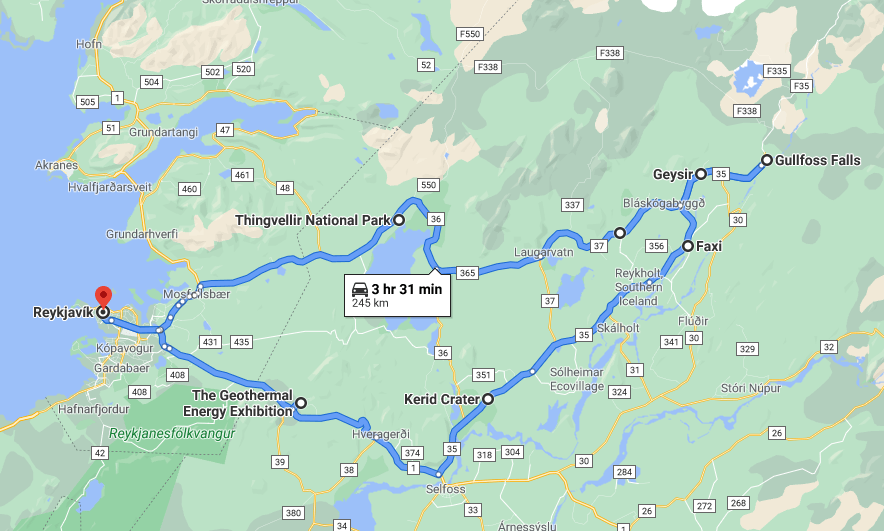A Day Tour Of The Golden Circle From Reykjavik
The Golden Circle in Iceland is a route that encompasses a lot of the best sightseeing destinations close to Reykjavik. It is a full day tour from Reykjavik but you can comfortably do most of what you would want to as long as you don’t dawdle along.
The Golden Circle in Iceland is not to be confused with the Ring Road. The Ring Road will allow you to drive all the way around Iceland, however can't be done in the winter. I'm sure there are some locals that might drive parts of it, but it does have sections that are just not accessible in Winter or shouldn't be driven unless you are VERY experienced in ice road driving.
We were in Iceland in November (Brad was with me on this trip) and already it was snowing and icy in areas that are not far from Reykjavik, so after much debate and a dicey weather report, we ended up canceling our hire car and doing a day tour for the Golden Circle. MAN – I was so glad we did.
The day was fantastic, however, the night before it had rained and then froze so the road was treacherous and I was so glad we weren’t driving with our summer driving skills. A few skids and sideways slides with someone else being really careful was enough for me.
That was one of my first experiences with black ice. I had thought it was a bit of a fallacy prior to that but after sitting up front with the driver on the way home, I learned that it’s not “black” like I had thought, it’s just mostly very hard to see. The black comes from the fact that you can see through the ice to the black tar below.
Anyway, the point is, we decided to do a day trip and relax and were very glad we did.
What you will see on the Golden Circle Tour
Geothermal Energy Exhibition
This was a great exhibition and both Brad and myself thoroughly enjoyed it. You do a short tour with a guide explaining how
- Iceland is 100% self-sustaining energy wise,
- how they get the geothermal energy,
- keep it stable and
- supply it across the country.
It is great to see how green Iceland is with regard to its energy supply. I was really surprised that all cars aren’t electric after seeing this, but I guess that is coming. I also read in a book not long ago that Iceland is now home to some big server farms that are focused on neffarious internet activities. Because of the cheap power and the cold (that huge server banks need), Iceland has become by default, hacker central globally.
The basis of Icelands Geothermic energy is its location. Situationally resting over the meeting of the Eurasian and North American tectronic places, Iceland's ability to generate this level of energy is directly related to this location.
As early as the 1940's Iceland was constructing pipelines to distribute power generated from their geothermal energy. While Iceland was developing and using Geothermic power, it wasn't until the 70's when the oil crisis hit that Iceland truely embrassed its unique method of generating power.
These days, Iceland has a 99.95% renewable energy supply.
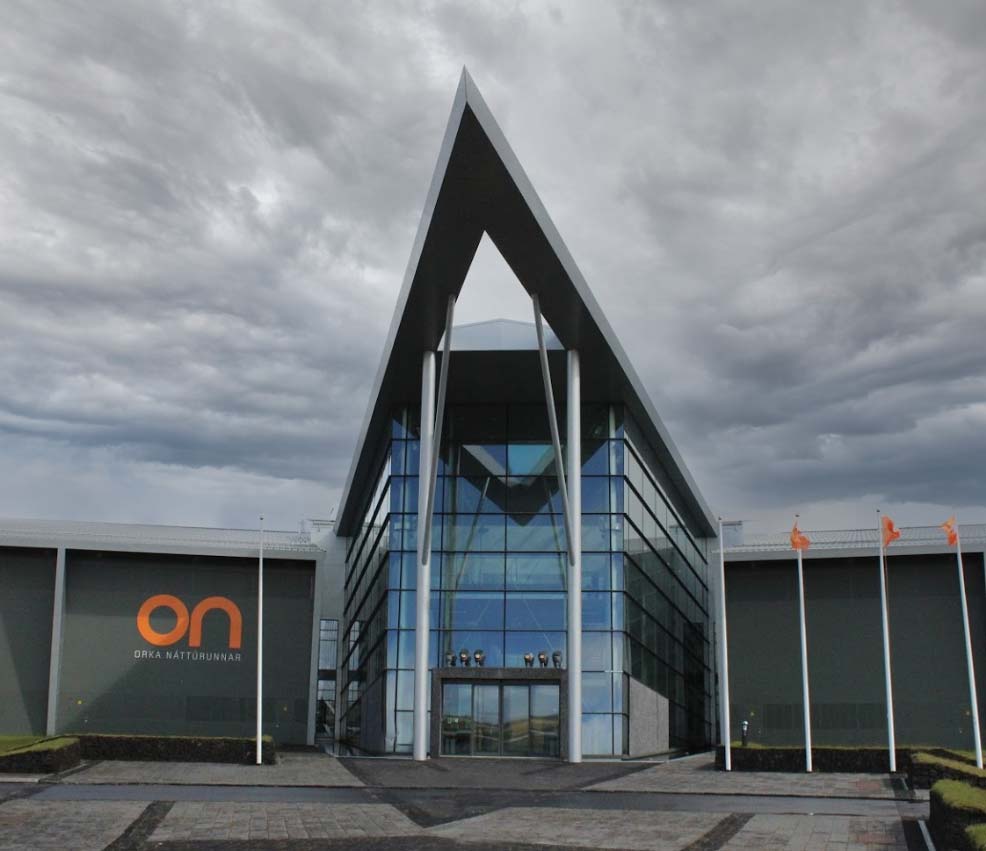
Kerid Crater
Surrounded by red volcanic rock, the blue of Kerid Crater is visible even in the dead of winter. Despite being almost frozen, this volcanic crater didn’t form from an explosion like you would usually expect. The crater is thought to have formed between 3000 & 6000 years ago when the magma in the center of a volcano caved into the empty chamber beneath it, which left a caldera that filled with water.
The lake itself is reasonably shallow at around 9 metres, but the water level is governed not by rainfall but by the height of the water table. So while of course the rainfall will affect the water level, its not until it has seeped through to the water table that the effects are seen.
The red color of the crater walls are due to its fairly recent creation (recent in volcano years that is). Because the crater is quite young, the red rock hasn't had time to oxidise and turn black. Cool hey?
The minerals in the soil under the water are what cause the milky aquamarine color you see.
While the photos you see of the crater in summer show the stunning aquamarine color, what you might not know is that in the dead of winter you can actually ice skate on the crater. Of course mid February it might be a little difficulte to get there, but our guide assured us it is possible.
If you are visiting outside a tour, it is 400 Kronur to enter and the crater is located about 15km from Selfoss on highway 35.
You can walk around the rim from the top or use the stairs to get to the waters edge, however I wouldn't recommend trying to walk around the crater walls. It is volcanic rock and very loose under your feet. You can stay as long as you like and take photos to your heart's content.
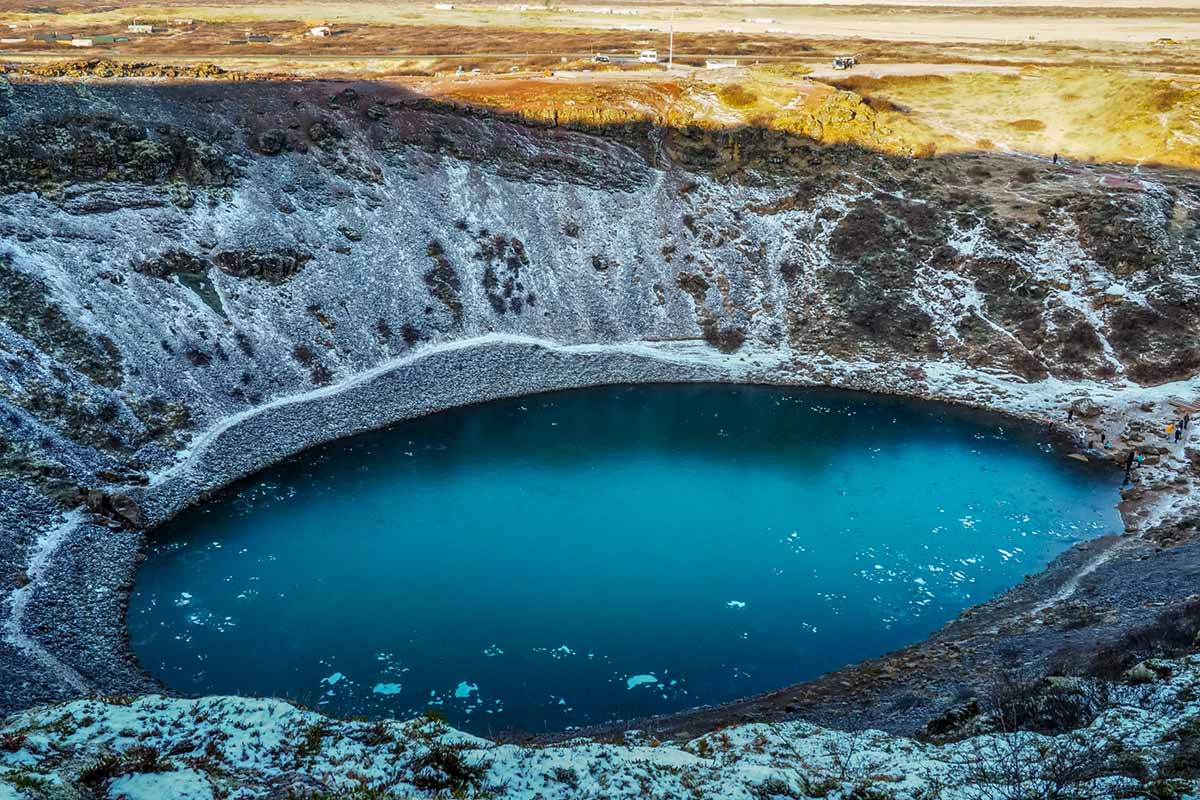
Faxi Waterfall
Faxi Waterfall in the Tunguflot River is around 80 meters wide but only 7 meters high. It isn’t super impressive as waterfalls go, however it isn’t overrun like Gullfoss is so it’s a nice place to get down close to the water and experience the cool mist. In the summer months we were told that the Icelandic horses are often grazing nearby which would make a great photo.
While Gullfoss and Bruarfoss are much bigger and stronger, the photographer in me really liked Faxi. While I didn't take too many photos myself, I did think that at dusk it would be a great place to take some moving water shots. You could get both the movement of the water and the still surrounds in quite easily which always seem to put a real perpective on those “frozen in time” shots.
It was a nice stop, however, the main thing here was that it was only us and a few other photographers visiting, so it was nice and serene.
Faxi also has a set of steps next to it which our guide told us was a “fish ladder”. Apparently, anglers or sports fishermen use the steps to catch salmon when they are running in the river.
Bruarfoss Waterfall
With a pristine blue color palate, Bruarfoss is becoming a mainstay on the Golden Route photo tour, however, we were very fortunate to get a day where there were almost no people. Our day tour ended up consisting of us and an American couple who were also keen hikers so our guide very kindly “tailored” our day to suit. He told us that if we spend only half an hour at the geothermal place and grabbed sandwiches to eat in the van for lunch at Geyser, we could fit in Bruarfoss Waterfall as long as we didn’t dilly dally. His words actually!
Bruarfoss waterfalls are fed from many points of the river so it doesn’t have one big fall. It’s the color that is the attraction. It actually only falls 2-3 meters. The Brúará river is fed from a glacier which is responsible for the stunning blue color. It’s a good hike in (our guide told us it was 3.5km each way) but it's on mostly flat trails so it is pretty easy. It can get muddy and slippery in the winter though so good solid shoes are a must for that time of year.
Hlauptungufoss is about halfway in and shortly thereafter is Midfoss. Once you get to Bruarfoss, there is a little timber bridge that crosses the waterfall which is a great place to take a photo.
Update 2020 – I’ve heard that the path into Bruarfoss is now closed due to people abusing the surrounding area with rubbish and trampling the sensitive ecosystem. The path goes over private property and they have now closed off access in response to tourists displaying such blatant neglect. Please let me know if this is the case or if as it has been suggested that was an earlier access we did not use.

Gullfoss Waterfall
Gullfoss or The Golden Waterfall, is situated on the Hvita river in Iceland. There is no admission fee to visit Gullfoss as it is a free and open public space so you could visit at night if you wanted to. There is a gift shop and restrooms for use which you are glad of by this point and even in winter the waterfall is very pretty.
I’m not sure I would put it up there with the best in the world but it is worth a visit for sure. I would actually recommend it in the winter as it seemed quite impressive to me in it’s half frozen state.
The water flows over the falls at a rate of around 110 meters per second, however in flood, that can co up to 2000 meters per second which could fill about 50 olympic swimming pools in a minute! When the river is in full flood the waterfalls can actually disappear as the water can’t run away as quickly as it's being filled up and the lower part of the river slowly rises to meet the falls. That would be an impressive (but slightly scary) sight.
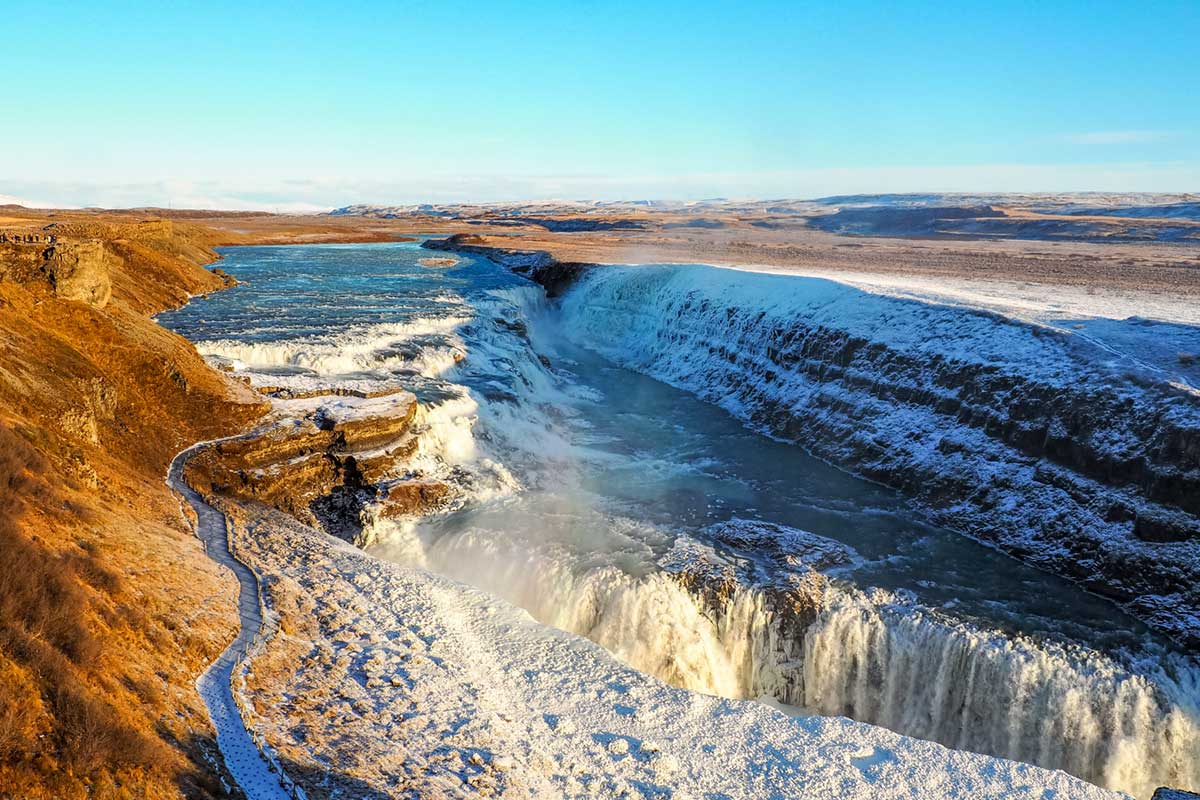
Thingvellir National Park.
Thingvellir (Þingvellir) is known for being the site of Iceland's first Parliament which convened annually from the early 900’s until the late 1700’s. You can see the ruins of old stone homes and huts and is also home to the Þingvellir Church. The parliamentary site isn’t the only draw card for Thingvellir however.
The national park sits in a rift valley between two tectonic plates. The massive stone cliffs really make you feel like you are smack bang in the middle of Game Of Thrones and enable you to see the shift in these plates in a spectacular fashion.
A large rift opened up after one particularly large earthquake and then filled with meltwater from the Langjokull glacier. The water that flows into Silfra Fissure (the fissure’s name) is purified by the natural filtration of the rocks and is so clear when it arrives in Silfra that it has visibility that exceeds 100 meters.
You can take a snorkeling tour into this crystal clear gap between two tectonic plates, however, you must go with one of only a few certified companies that are allowed to use the fissure in this way. Unfortunately, we could not get in for the few days we were in Reykjavik so we will have to go back to Iceland and do that another day!
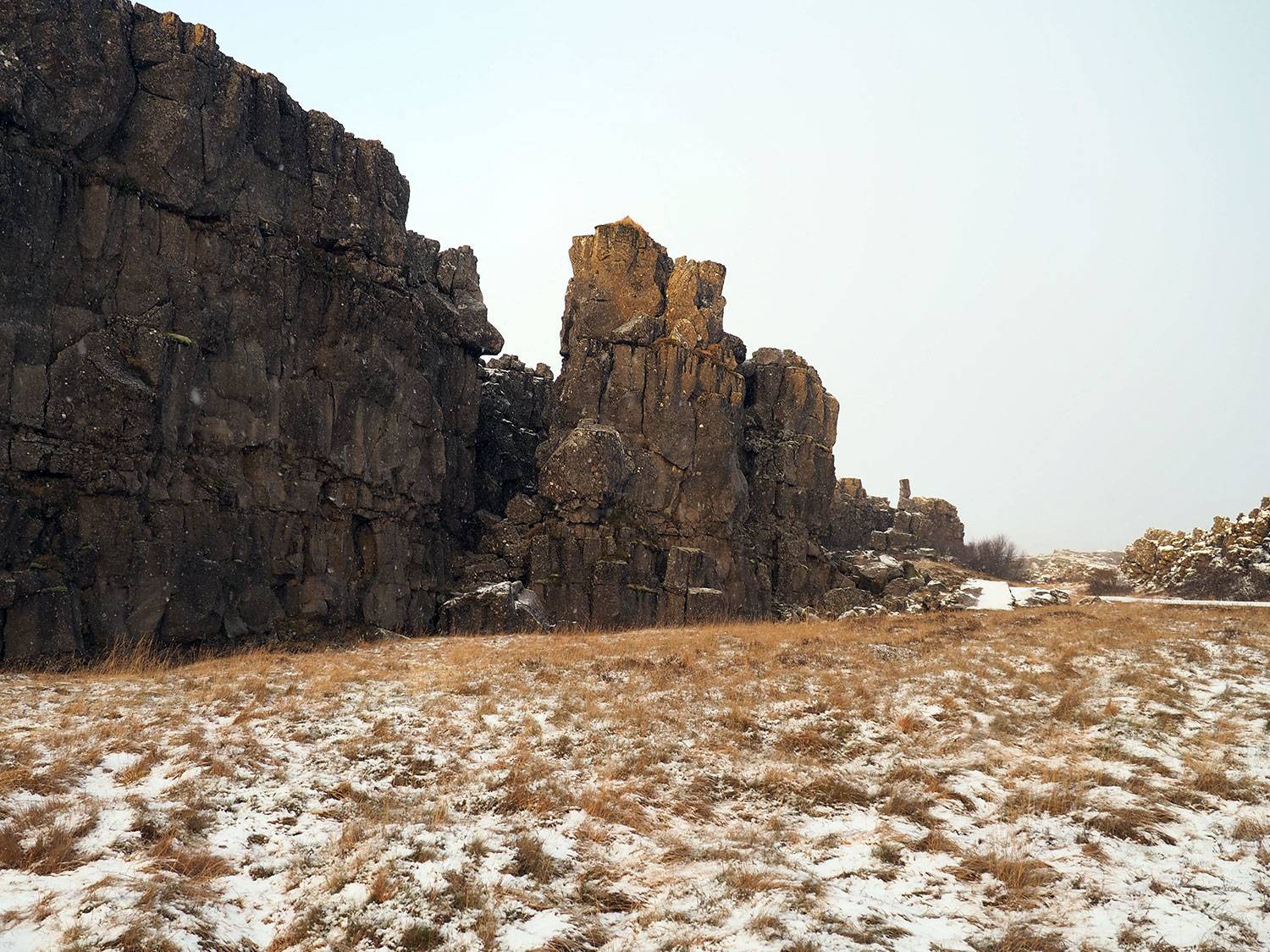
Strokkur At Geysir Hot Springs
What was once the main attraction “The Great Geysir” is now mostly dormant. It was brought back to life in 2000 after an earthquake and did erupt consistently for a few years, however, nowadays it is primarily dormant. Aparantly they can make it erupt with soap somehow but that is not welcomed in todays eco friendly world and is used mostly on Icelands national holiday if at all.
Strokkur still erupts on a regular basis and is definitely worth the wait. Erupting at around 10-minute intervals, Strokkur shoots jets of boiling water up to 40 meters into the air. It is actually quite easy to get it on camera as you can see the water at the base of the Geysir boiling and popping just prior to it erupting.
Strokkur and Geysir are believed to be the same age but since Geysir erupted higher and was more impressive, there isn't any mention of Strokkur until 1789. It has now outlasted Geysir in its eruption regularity and is a firm staple on almost all travelers' Golden Route tour.
There is also a cafe and restaurant at the Geysir center which serves pretty decent food. We only stopped for a takeaway sandwhich and coffee but it looked to have some good options at not too expensive prices.

What Golden Circle Tour Should You Do?
We decided to go with Extreme Iceland but they don't seem to do this exact tour any longer. It looks like they do some of what we saw but not all and a lot seem to do the Blue Lagoon as well. There are a few listed below through Get Your Guide who I've used heaps.
My only recommendation would be to NOT do Blue Lagoon on the same day as you will end up with no time anywhere and it would end up very rushed. So I would recommend booking a tour for Blue Lagoon separately and making sure its not included in the Golden Circle tour you choose otherwise you won't get the time you need at each location.
We did get very fortunate as our minibus looked like it could seat around 10-12 but there was only 4 of us that day. Our driver did mention that a family just wasn't there for pickup and despite us swinging by their location again on the way out of town, they didn't show so it was just the 4 of use. Score!
The map of the route we did is below with the route marked in. You can see that Google Maps says that this route would be 3.5 hours to drive just the route so that gives you an idea of the time you will need. I would say that if you plan to do it yourself, plan for a good 8-9 hours.
